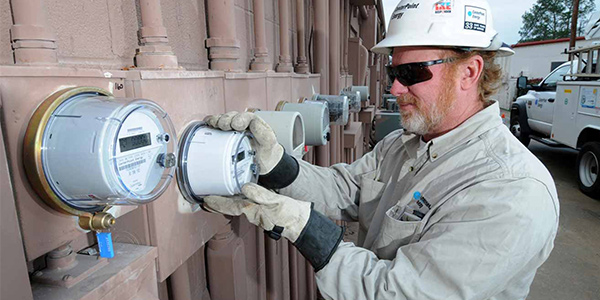
The former Halliburton CEO said CenterPoint would focus on cost management, rebuilding regulatory relationships, evaluating options for its Enable Midstream Partners with OGE Energy and properly aligning its businesses. The Texas Public Utility Commission in February approved a settlement that cut the company’s proposed rate increase for its Houston Electric utility from $161 million to $13 million.
Days before the earnings call Thursday, CenterPoint announced it was immediately merging Houston Electric and Indiana Electric into one organization, saying “the alignment of CenterPoint Energy’s generation, transmission, distribution and engineering areas into one organization” will improve efficiency, operations and reliability.
“When we say ‘simplify the story,’ as I sort of look back at how we’ve communicated with shareholders over the past several years, we really have not had a consistent message,” Lesar said during the call. “We’ve had a relatively complicated story. We’ve had a lot of [mergers and acquisitions]. We’ve had regulated versus nonregulated.
“A simple message to shareholders consistently executed quarter after quarter will, I think, help regain confidence that shareholders have in us. … Give me some time. Thirty days is not enough time to give you a complete answer, but we’re definitely headed in that direction,” he said.
The road will be a steep one, as CenterPoint reported second-quarter earnings of $59 million ($0.11/diluted share), driven by customer growth, rate relief and “disciplined” operations and maintenance management. A year ago, the company delivered quarterly earnings of $165 million ($0.33/diluted share).
Still, that was better than CenterPoint’s first-quarter report, when it took a $1.2 billion loss after writing off $1.6 billion in losses from Enable. (See Enable Losses Slam CenterPoint, OGE Energy.)
CenterPoint’s stock price closed Friday at $20.41, up $1.36 (7.1%) from its open before the earnings announcement.
“I believe our share price is too low and trades at an unreasonable discount,” Lesar said. “After speaking with many of you in the short time I’ve been here, I believe I have a better understanding for the reasons why this discount exists. You believe we have let you down, and it’s certainly my job to address those issues that concern you as we move forward.”
Lesar joined CenterPoint’s board of directors in May and is leading a Business Review and Evaluation Committee (BREC) conducting a comprehensive, five-month review of CenterPoint businesses, assets and ownership interest.
“I can clearly tell you that nothing is off the table in the BREC review process,” he said.
Lesar replaced interim CEO John Somerhalder in July. Somerhalder replaced Scott Prochazka, who resigned after seven years at the helm in February. (See Prochazka Steps down as CenterPoint CEO.)
Lesar left Halliburton in 2018 when he hit the oilfield-service giant’s mandatory retirement age of 65 for executives, a policy he helped install.
Asked about his age, Lesar said, “I see myself as 67 going on 50. I’ve got a lot of energy; I like being a CEO; I like being a leader. I have not set a timeline on my tenure here, but I’ll know it, [and] the board will know it, when it’s right for me to move on. I’m raring to go.”
OGE Survives ‘Challenging Times’
OGE also reported second-quarter earnings on Thursday of $85.9 million ($0.43/diluted share) during what CEO Sean Trauschke called “challenging times.” A year ago, the Oklahoma City-based company reported quarterly earnings of $100.2 million ($0.50/diluted share).
Earnings adjusted for nonrecurring costs came in at 51 cents/share, beating analysts’ expectations of 49 cents.
The ongoing earnings exclude a non-cash charge of $780 million associated with OGE’s impaired investment in Enable. The natural gas midstream company contributed $19 million to OGE’s net income and $18 million in cash distributions, down from last year’s second quarter of $27 million and $35 million, respectively.
“When we created Enable, our goal was to turn it into a standalone entity. From that perspective, it has worked very well,” Trauschke said. “We are always evaluating the value of all of our assets, including Enable. We’re not going to talk publicly about strategic alternatives, because that does not help increase value.”
Like many utilities, OGE subsidiary Oklahoma Gas & Electric has seen its energy usage shift from commercial and industrial consumers to residential during the COVID-19 pandemic. Weather-adjusted residential sales were up 2.3% in the first six months of 2020, while commercial and industrial were both down, 5.6% and 7.6%, respectively. Total weather-adjusted sales are approaching pre-COVID 19 levels but still down 3.2% through June.
OGE’s stock price gained 31 cents after the announcement, finishing the week at $33.28.





